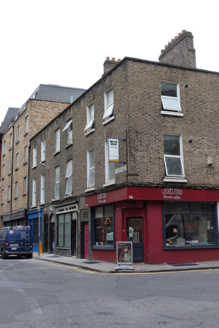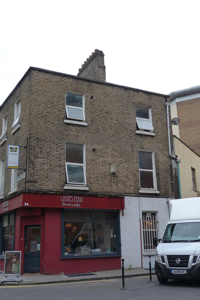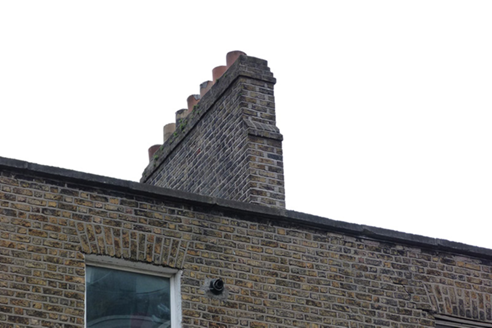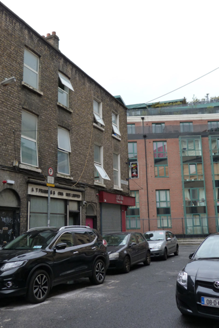Survey Data
Reg No
50110014
Rating
Regional
Categories of Special Interest
Architectural, Social
Original Use
House
In Use As
Apartment/flat (converted)
Date
1800 - 1820
Coordinates
315482, 233526
Date Recorded
28/04/2017
Date Updated
--/--/--
Description
Corner-sited end-of-terrace L-plan two-bay three-storey former house over basement, built c. 1810, having two-bay elevation to west (side) elevation and recent wraparound shopfront, with accommodation over. L-plan slate roof, hipped to corner and south end of return, hidden behind brick parapet with granite coping, and having long brick chimneystacks to east party wall and at right angles to junction of front block and return, with clay pots. Yellow brick walling, laid in Flemish bond. Square-headed openings with granite sills and replacement uPVC windows. Round-headed door opening to east end of front elevation with rendered reveals, panelled timber pilasters and plain fanlight. Granite kerbing and cast-iron grille to footpath.
Appraisal
This building was probably purpose-built as a commercial and residential building and forms part of a unified terrace with the houses to the east. Though modest in scale and form, these buildings display a regularity of design and proportion, seen in the even fenestration arrangement and shared roof-line. The terrace forms a noteworthy early nineteenth-century layer of the historic character of the district. Whitefriar Place is named after the Carmelite or White Friars, who were invited to St. Peter's Parish about 1230 by Robert Bagot, Chief Justice. They developed a religious house with associated gardens and buildings on the site now occupied by Whitefriar Street Church. Following the Dissolution of the Monasteries, the property was bequeathed to Nicholas Stanihurst and subsequently came into the hands of Francis Aungier and was developed as part of the Aungier Estate.







